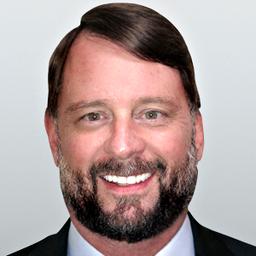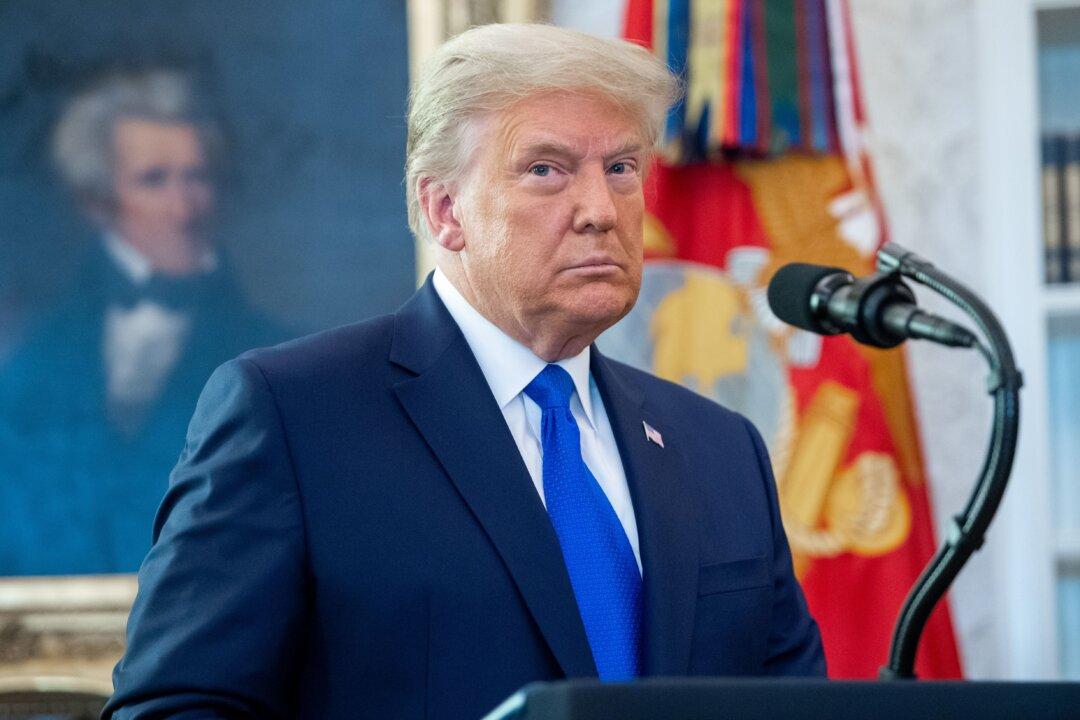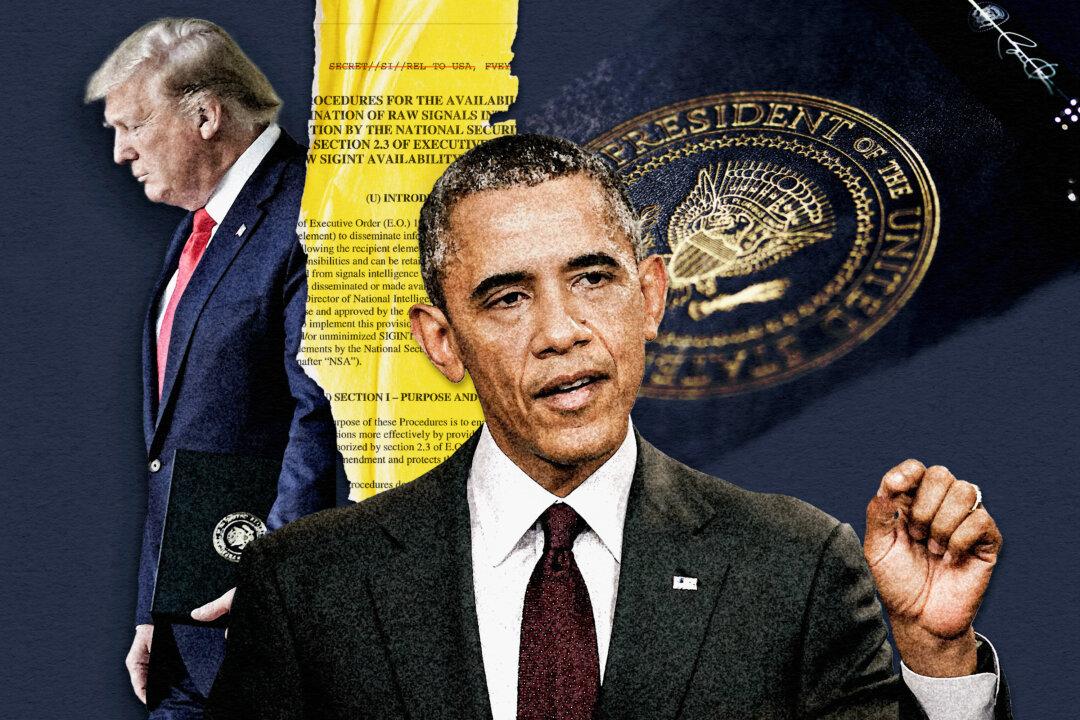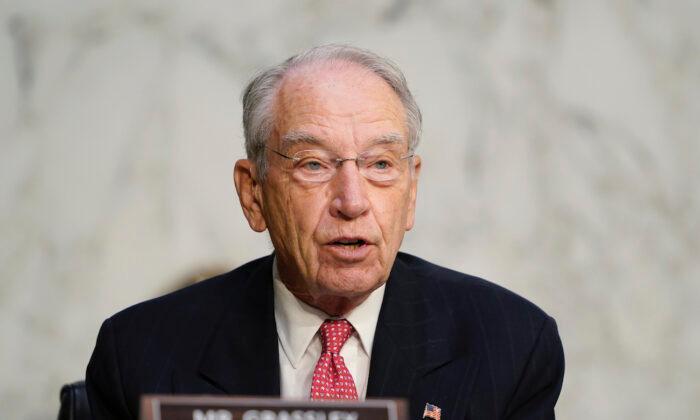Robert Mueller, who investigated allegations of Russia collusion and obstruction of justice for nearly two years as special counsel, will be testifying before the House Judiciary and Intelligence committees on July 17.
Mueller’s investigation, which concluded there was no evidence that the Trump campaign colluded with Russia and that there was insufficient evidence to support obstruction charges, has been criticized for attempting to inflict political damage on President Donald Trump.
1) Did Attorney General William Barr in any way misrepresent your 448-page report?
In the days following the delivery of the final Mueller report to William Barr, the attorney general put out a four-page summary. Barr would later tell CBS News’ Jan Crawford that he was forced to issue the summary because Mueller hadn’t identified which material in his report was actually underlying grand jury material, despite advance requests from Barr to do so. The report couldn’t be released publicly with the sensitive information until it was redacted.2) Who actually wrote Volume I and Volume II of your report?
The Mueller report often reads as highly opinionated and lacking in substance—particularly the section denoted as Volume II—which frequently cites news articles in the footnotes. At this point, it isn’t known with certainty if Mueller had any hand in writing the report directly, or if he simply served in an oversight capacity.3) Were any of the authors of your report in contact or consulting with representatives of either Brookings Institution or Atlantic Council?
Less than six months after Mueller’s appointment, the Brookings Institution published the first of two reports titled “Presidential Obstruction of Justice: The Case of Donald J. Trump,” which outlined, among other things, a scenario wherein Mueller would refer his obstruction findings to Congress, which would then take up the matter and continue investigating. The report also discussed ways in which Congress could impeach the president.4) In your report, you reference “efforts to curtail the Special Counsel’s investigation.” Did the president ever actually limit or impede your investigation?
In Volume II of the Mueller report, the special counsel team examined 11 targeted areas for possible obstruction of justice by the president, including the “president’s efforts to curtail the special counsel investigation.” None of these instances alleged by Mueller appear to have had any actual effect on the special counsel’s investigation.Mueller alleged that Trump wanted then-Attorney General Jeff Sessions to announce the special counsel’s investigation was “unfair to the president.” He also noted the president’s desire to have Sessions reverse his recusal from the Russia investigation.
Notably, Mueller was never fired by the president, nor was Rosenstein removed from oversight of the Mueller probe.
5) Why did you provide a conclusion on collusion but not on obstruction?
Barr noted that Mueller took into account the Office of Legal Counsel (OLC) opinion that a sitting president couldn’t be indicted, but also included “a number of other prudential judgments about fairness and other things and decided that the best course was not for him to reach a decision.”Despite the joint statement, Barr said that he believed Mueller could have reached a conclusion on obstruction, and stated that both he and Rosenstein were surprised when Mueller didn’t do so.
Trump was told on three separate occasions by then-FBI Director James Comey that he wasn’t personally under investigation by the FBI. Therefore, Trump couldn’t have obstructed an investigation of himself, since he didn’t know there was an investigation to begin with.
6) At what point did you and/or the special counsel team determine that there was no evidence of collusion between the Trump campaign and Russia?
Although deference to the conclusion of the combined investigation may shield an underlying answer, the question has material relevance when viewed against the 2018 midterm elections, in which Republicans lost their majority in the House to the Democrats.Notably, FBI agent Peter Strzok—who played a key role in the counterintelligence investigation of the Trump campaign—texted FBI lawyer Lisa Page the day after Mueller was appointed, on May 18, 2017, about lacking evidence of collusion:
“You and I both know the odds are nothing. If I thought it was likely, I’d be there, no question. I hesitate, in part, because of my gut sense and concern there’s no big there there.”
7) You determined there was no collusion on the part of the Trump campaign, which implies that you also determined the allegations within the Steele dossier to be invalid. Was there an obligation on your part to inform the FISA court of this and did you do so?
We know from the Aug. 28, 2018, testimony of DOJ official Bruce Ohr that Mueller team member Andrew Weissmann knew of Christopher Steele’s efforts and dossier at a relatively early stage. Ohr would meet in either late September or early October 2016 with Strzok, Page, and DOJ criminal-division officials Bruce Swartz, Zainab Ahmad, and Andrew Weissmann to discuss information relayed by Steele:“I also provided this information to people in the criminal division, specifically Bruce Swartz, Zainab Ahmad, and Andrew Weissmann.”
8) Did you examine the effects on the election that may have resulted from a Fusion-led Steele disinformation campaign?
As Mueller notes in his report, “The order appointing the Special Counsel authorized him to investigate ‘the Russian government’s efforts to interfere in the 2016 presidential election,’ including any links or coordination between the Russian government and individuals associated with the Trump Campaign.”The Mueller report found no evidence of collusion by the Trump campaign with Russia, which, in turn, invalidates the claims made within the Steele dossier. But Steele is mentioned only 14 times in the special counsel report—and not in any direct relation to Steele’s effect on the election.
Fusion GPS co-founder Glenn Simpson and Steele not only used their contacts at the FBI to feed information directly to the bureau, but also used their contacts within other agencies to create additional channels into the FBI. Additionally, they utilized their media connections to create an external distribution channel for the unverified material against Trump and his campaign.
Steele met with David Kramer, a longtime associate of the late Sen. John McCain in London on Nov. 28, 2016, and allowed Kramer to review Steele’s memos. Steele apparently didn’t provide Kramer with a physical copy of his dossier, but upon Kramer’s return to the United States, he was provided with a copy of the dossier, from Simpson.
Kramer gave a copy of the dossier to McCain, who later passed a copy to Comey on Dec. 9, 2016. Kramer also shared the dossier with multiple journalists and several government officials.
9) Why did you not examine the Hillary Clinton campaign’s and the DNC’s ties to Fusion GPS, Christopher Steele, and the dossier?
In early March 2016, Fusion GPS approached Perkins Coie—the law firm used by the Clinton campaign and the Democratic National Committee (DNC)—expressing interest in an “engagement,” according to an Oct. 24, 2017, letter by Perkins Coie. The firm hired Fusion GPS in April 2016 to “perform a variety of research services during the 2016 election cycle.”Steele’s firm, Orbis Business Intelligence, was retained by Fusion GPS during the period between June and November 2016.
Steele provided Fusion GPS with something that Simpson’s firm was lacking: access to individuals within the FBI and the State Department. Fusion GPS was concurrently in the employ of a Russian company, and Steele had ties to Russian oligarch Oleg Deripaska, having been in his employ.
10) Did you examine Bruce Ohr’s interactions with Steele and the FBI during and after the election?
On July 30, 2016, Bruce Ohr and his wife, Nellie, met Steele for breakfast at the Mayflower Hotel in Washington. The timing of the July 30 breakfast meeting is of particular note, as the FBI’s counterintelligence investigation, “Crossfire Hurricane,” was formally opened the following day, on July 31, 2016, by Strzok.Immediately following the Ohrs’ breakfast meeting with Steele, Bruce Ohr reached out to FBI Deputy Director Andrew McCabe, and the two met in McCabe’s office—sometime between July 30 and the first days of August. Also present at this meeting was Lisa Page, who had previously worked for Bruce Ohr at the DOJ, where he was her direct supervisor for five to six years.
On Nov. 21, 2016, Ohr met with FBI agent Strzok and FBI lawyer Page, and was introduced to agent Joe Pientka, who became Ohr’s handler at the agency.
11) Why did you not investigate the work of Nellie Ohr on behalf of Fusion GPS, along with her ties to Ukrainian member of Parliament Serhiy Leschenko?
Eight months before Fusion GPS hired Steele, Simpson had hired Nellie Ohr to work for his firm as a researcher in October 2015.Nellie Ohr told congressional investigators that part of her work for Fusion GPS was to research the Trump 2016 presidential campaign, including campaign associate Carter Page, early campaign supporter Lt. Gen. Michael Flynn, and campaign manager Paul Manafort, as well as Trump’s family members, including some of his children.
Email communications between her and her husband, Bruce, show that she routinely sent him and several other DOJ officials articles on Russia. The emails continued through the duration of Nellie’s employment with Fusion GPS.
Nellie Ohr told congressional investigators that Serhiy Leshchenko, a member of the Ukrainian Parliament, served as “a source of information” and acknowledged that she then used that information in following up and formulating her opposition research.
Leshchenko, along with Artem Sytnyk, the director of Ukraine’s National Anti-Corruption Bureau, was responsible for publicly disclosing the contents of the Ukrainian “black ledger,” which implicated Trump campaign manager Paul Manafort, to the media.
12) Did you investigate Christopher Steele’s discussions with State Department official Kathleen Kavalec?
On Oct. 11, 2016, dossier author Steele met with Kathleen Kavalec, then-deputy assistant secretary of state for European and Eurasian affairs, just 10 days before the FBI obtained a FISA warrant on Trump campaign adviser Carter Page on Oct. 21, 2016. Also present at that meeting was Tatyana Duran, who was referenced as being with Steele’s firm, Orbis Security.In Kavalec’s typed notes, she writes that Steele told her, “The institution approached them [Steele’s firm, Orbis] based on the recommendation of Glenn Simpson and Peter Fritch (specialists in economic crime, formerly of the WSJ) and is keen to see this information come to light prior to November 8.”
13) Did you investigate election meddling by any countries other than Russia?
Luke Harding, a journalist for The Guardian, reported on the early involvement of UK intelligence, noting that Britain’s Government Communications Headquarters (GCHQ) was engaged in collecting information and transmitting it to the United States beginning in late 2015.Alex Younger, the MI6 chief, and Andrew Parker, the MI5 director general, were then briefed about the dossier—before Trump was made aware of its existence by Comey.
Information allegedly relayed by Papadopoulos during the meeting—that the Russians had damaging information on Hillary Clinton—appears nearly identical to information later contained in the first memo from Steele that the FBI obtained in early July 2016.
14) Why did your report omit information regarding Fusion’s employment by Russian clients while they were also employed by Perkins Coie on behalf of the DNC?
Prevezon, a Russian company, was represented by Russian lawyer Natalia Veselnitskaya. Veselnitskaya was also one of the participants in the infamous Trump Tower meeting.15) Why did you report omit Christopher Steele’s direct ties to Russian oligarch Oleg Deripaska—including the fact that Steele was actually employed by Deripaska?
Steele has known Deripaska since at least 2012, when he was hired by U.S. lawyer Adam Waldman, on Deripaska’s behalf, to assist in a lawsuit filed “by a business rival,” according to an August 2018 article by John Solomon for The Hill. Deripaska has confirmed this version of events in a recent interview with The Hill.Ohr would later act as a conduit between Steele and the FBI in 2016 and 2017, in the context of the agency’s counterintelligence investigation into the Trump campaign.
During a series of communications in early 2016, Steele appeared to be lobbying Ohr on Deripaska’s behalf. The discussions also appeared to have involved Waldman.
16) Why was selective editing used in the representation of the transcript of a phone call between the president’s attorney, John Dowd, and the attorney for former national security adviser Michael Flynn?
Trump’s attorney, John Dowd, was never interviewed by the special counsel, who cited attorney-client privilege issues as the reason in a footnote within the report. Dowd’s voicemail left for Michael Flynn’s lawyer was edited in the presentation within the Mueller report to appear as a more menacing version that left out important details and distorted the actual context of Dowd’s voicemail.17) Did you fully investigate the origins of the alleged DNC server hack, and what forensic evidence was actually examined?
The Mueller report notes that “between April 18, 2016, and June 8, 2016, [Russian] Unit 26165 compromised more than 30 computers on the DNC network, including the DNC mail server and shared file server.”“In July 2015, Russian Intelligence gained access to Democratic National Committee networks and maintained that access until at least June 2016,” the DNC complaint reads.
DNC executives claim they were never contacted by the FBI. However, the FBI has disputed this version of events and has stated that it reached out to the DNC in September and November 2015, and also met in person with DNC officials at least twice by March 2016.
According to the DNC lawsuit, “On April 18, 2016, Russia launched a second phase of its cyberattack on DNC servers.” The DNC discovered the alleged intrusion on April 28, 2016.
18) Did you investigate the FBI’s initiation of its July 31, 2016 counterintelligence investigation and the role John Brennan had in providing the information that helped establish it?
The FBI’s counterintelligence investigation, “Crossfire Hurricane,” was formally opened on July 31, 2016, by Strzok.The FBI claims the investigation was predicated on information provided by Australia on July 22, 2016, regarding comments made by Papadopoulos to Downer, then Australia’s high commissioner to the UK, in May 2016.
“I was aware of intelligence and information about contacts between Russian officials and U.S. persons that raised concerns in my mind about whether or not those individuals were cooperating with the Russians, either in a witting or unwitting fashion, and it served as the basis for the FBI investigation to determine whether such collusion [or] cooperation occurred.”
19) Why was selective editing used in the representation of communications between former Trump lawyer Michael Cohen and Giorgi Rtskhiladze, who was born in the former Soviet Republic of Georgia and has been a U.S. citizen since 2017?
The Mueller report, which incorrectly refers to Rtskhiladze as a “Russian businessman,” contains excerpts of some texts between the two men.20) Why did you use May 6, 2016, as the date of a meeting between George Papadopoulos and a representative of a foreign government—and was this in reference to Australian diplomat Alexander Downer?
Publicly available information has always shown that Papadopoulos met with Downer on May 10—and both Downer and the Australian government appear to stand by that date.While it might appear that the difference in dates is small, it becomes more significant in the context of two different meetings that, according to Papadopoulos, took place on or about May 6, ahead of the Downer meeting on May 10.
“They’re spending a lot of money on me, their probing me, they’re asking me about my ties in the Middle East. They’re asking me about what Trump wants to do with Russia,” Papadopoulos noted.
21) Why did you fail to note that Rod Rosenstein and then-AG Jeff Sessions had discussed the need to remove James Comey as FBI director prior to Sessions’s confirmation as AG?
The firing of former FBI Director Comey features prominently in Volume II of the Mueller report, as does Rosenstein’s role.“In one of my first meetings with then-Sen. Jeff Sessions last winter, we discussed the need for new leadership at the FBI. Among the concerns that I recall were to restore the credibility of the FBI, respect the established authority of the Department of Justice, limit public statements, and eliminate leaks.”
22) Why was George Nader, a witness who is mentioned more than 100 times in your report, allowed to leave the country, and why wasn’t it disclosed that he was charged for possession of child pornography?
Nader was interviewed on Jan. 17, 2018, by FBI agents on a matter unrelated to the current charges. At the conclusion of the interview, Nader was notified of a search warrant for his phones.Nader’s phones were searched for evidence under the search warrant on Feb. 12, 2018, which was unrelated to any matters of child pornography. It was at this point that the child pornography was discovered and referred to the charging FBI agent.
23) Why have you not made publicly available the unredacted versions of the two additional scope memos from Rod Rosenstein? Do any additional memos exist?
Rosenstein, on Aug. 2, 2017, secretly issued Mueller a revised “Scope of Investigation & Definition of Authority” memo that remains heavily redacted. The full purpose of this memo remains unknown.The majority of the memo’s body is redacted, with only one section, relating to the former chairman of the Trump presidential campaign, Paul Manafort, unclassified.
Additionally, the Mueller report discloses the existence of a second, and previously unknown, memo from Oct. 20, 2017. This memo allowed for the investigation of activities involving Michael Cohen, Rick Gates, Roger Stone, and two unidentified parties. Manafort is mentioned in a later section.
24) Who leaked Gen. Michael Flynn’s phone calls with the Russian ambassador—a felony violation? Was there a FISA or national security letter issued on Flynn?
Lt. Gen. Michael Flynn, then-national security adviser to President Donald Trump, was interviewed on Jan. 24, 2017, by FBI agents Strzok and Pientka about two December 2016 conversations that Flynn had with Russian Ambassador Sergei Kislyak.25) Is there a 302 FBI document from Jan. 19, 2017, on Gen. Michael Flynn?
Two 302s, a type of FBI form that is a written summation of an interview, are referenced with regard to Gen. Flynn in the Mueller report. The repeatedly referenced Flynn 302 dates are Nov. 16, Nov. 17, Nov. 20, and Nov. 21 in 2017 and Jan. 19, 2018. On page 172, there are also three references to a 302 dated Jan. 19, 2017.That may be a typo, although it’s repeated three times, and if so, would further highlight errors within the report.
Court documents detail a Jan. 24, 2017, interview of Gen. Flynn by Strzok and an unknown FBI agent (likely Pientka) on Jan. 24, 2017—five days after the 302 dated Jan. 19.
26) Why did the special counsel’s office delete all the data from Peter Strzok’s phone?
The DOJ’s Office of Inspector General’s “Report of Investigation: Recovery of Text Messages From Certain FBI Mobile Devices” states:“According to SCO’s Records Officer, Strzok was removed from SCO-related work in late July 2017, and he completed his Exit Clearance Certificate on Aug. 11, 2017. As part of an office records retention procedure, the SCO Records Officer stated that she reviewed Strzok’s phone on Sept. 6, 2017. She told the OIG that she determined it did not contain records that needed to be retained. She noted in her records log about Strzok’s phone: “No substantive texts, notes or reminders.” The SCO Records Officer does not recall whether there were any text messages on Strzok’s phone.”
Lisa Page’s phone was also found to have been reset to factory settings, although it isn’t clear who did so:
27) Why did you bring Peter Strzok and Lisa Page onto your team after they had been involved in the investigation into the Hillary Clinton email server investigation? Were you aware of their personal relationship?
Lisa Page and Peter Strzok worked on both the Clinton email server investigation as well as the FBI counterintelligence investigation into Trump–Russia collusion.Page, who acknowledged her personal relationship with Strzok at several points during the interview, noted that initially, Strzok wasn’t “brought over as the senior executive to run the investigation. Another individual was, and that was not successful. It was not a good match with Mr. Mueller. He did not really have the sufficient counterintelligence background to be effective.” That individual would later be identified as John Brown.
Page agreed to work for a 45-day trial period, but at the end of that time, she left to spend more time with her children, by her own account. Page apparently left of her own volition and before Inspector General Michael Horowitz notified Mueller (and then-Acting FBI Director Andrew McCabe) of the texts between Page and Strzok on July 27, 2017. Strzok was removed from the special counsel investigation the following day.
28) Why did the special counsel interview Peter Strzok approximately one week before he was removed from the special counsel investigation?
In relation to the case of Gen. Flynn, a filing from Mueller’s team included a FD-302 dated Aug. 22, 2017, containing information from an interview of Strzok that had occurred on July 19, 2017.29) Why did you staff your investigation with people who appeared to have a political bias and had publicly demonstrated support for Clinton and the Obama administration?
In a Dec. 12, 2107, article, “One Mueller-Investigation Coincidence too Many,” Victor Davis Hanson, a senior fellow at the Hoover Institution, examined the litany of personnel conflicts surrounding the Mueller investigation:“At least six of Mueller’s staff of 15 lawyers ... previously had donated (in some cases, quite generously) to Hillary Clinton’s campaigns.
“Andrew Weissmann, who is another veteran prosecutor assigned to Mueller’s legal team, praised Sally Yates, an Obama-administration holdover at the Trump Department of Justice, for breaking her oath of office and refusing to carry out President Trump’s immigration order.
“Another attorney on the Mueller staff, Jeannie Rhee, was at one time the personal attorney of Ben Rhodes, the Obama deputy national security adviser. ... Rhee also provided legal counsel to the Clinton Foundation and was a generous donor to Hillary Clinton’s presidential campaign.
“[Aaron Zebley, who] once served as Mueller’s chief of staff while employed at the FBI ... represented Justin Cooper. ... [Cooper] was the IT staffer who set up set up Hillary Clinton’s likely illegal and unsecure server at her home, and who purportedly smashed Clinton’s various BlackBerries with a hammer in fear they would be subpoenaed.”
Hanson sums it up in this fashion:
30) Please describe your May 16, 2017, meeting with President Donald Trump and then-DAG Rod Rosenstein. Was the possibility of your becoming the FBI director discussed at the meeting?
On the morning of May 16, 2017, Rosenstein allegedly suggested to McCabe that he could secretly record Trump. The allegations against Rosenstein, raised in September 2018, came only from McCabe, who had been fired for lying to the DOJ’s inspector general three separate times while under oath.That meeting, where McCabe pushed for an investigation into Trump, took place five days after McCabe had publicly testified that there was no obstruction on the part of the Trump administration.
Sometime later that same day, both Rosenstein and Trump met with former FBI Director Mueller in the Oval Office. The meeting was reported as concerning the FBI director position, but the idea that Mueller would be considered for the role seems unlikely. By law, an FBI director is allowed to serve for only 10 years, and Mueller had already received a special exemption during the Obama administration to serve for two additional years, making another exemption from Congress highly unlikely.
Rosenstein appointed Mueller as special counsel the following day, on May 17, 2017, and in doing so, removed control of the Trump–Russia investigation from McCabe and put it into the hands of Mueller.
31) When did you learn of the Strzok emails and did you learn of them from IG Michael Horowitz or from acting FBI Director Andrew McCabe? Did McCabe play a role in Peter Strzok’s removal from the special counsel’s investigation?
On July 14, 2017, DOJ Inspector General Michael Horowitz suddenly decided to respond to a letter sent by a group of Democratic senators. Horowitz’s letter appears to indicate that he was evaluating the direction of his investigation.At some point prior to July 20, 2017, Horowitz had uncovered texts between Strzok and Lisa Page that caused him sufficient alarm to request all texts between the two during the Clinton email investigation. Upon receipt and review of these texts, Horowitz then requested all available texts on July 28, 2017, from the pair; he received these additional texts 13 days later, on Aug.10, 2017.
Horowitz didn’t provide the initial discovery date of the Page/Strzok texts, but given the subsequent receipt times of seven to 12 days, it would seem reasonable to assume that Horowitz made the initial discovery sometime prior to his July 14, 2017, letter to the Democratic senators regarding the possibility of any additional investigative review.
32) Why did you choose to step outside a normal prosecutorial role and comment publicly that your investigation did not exonerate President Trump?
The Mueller report notes that in relation to collusion, “the investigation did not establish that members of the Trump Campaign conspired or coordinated with the Russian government in its election interference activities.”However, in the section concerning obstruction, Mueller deviated from a traditional prosecutorial role by noting that “based on the facts and the applicable legal standards, we are unable to reach that judgment. Accordingly, while this report does not conclude that the President committed a crime, it also does not exonerate him.”
33) Why did you fail to charge Joseph Mifsud, despite your findings that he lied to the special counsel team? Are any of the people listed in your report, such as Mifsud, Konstantin Kilimnik, or Felix Sater, U.S. government informants?
According to the Mueller report, “Mifsud denied that he had advance knowledge that Russia was in possession of emails damaging to candidate Clinton, stating that he and Papadopoulos had discussed cybersecurity and hacking as a larger issue, and that Papadopoulos must have misunderstood their conversation. Mifsud also falsely stated that he hadn’t seen Papadopoulos since the meeting at which Mifsud introduced him to Olga Polonskaya, a woman that Mifsud claimed to be Putin’s niece, even though emails, text messages, and other information show that Mifsud met with Papadopoulos on at least two other occasions.”Papadopoulos was charged by Mueller for lying to the FBI, but Mifsud hasn’t been charged. Additionally, Mifsud is portrayed by the Mueller report as having connections to Russia, but Mifsud has ties to Link Campus in Rome, along with others in Western intelligence, and it was at Link Campus that Papadopoulos was first introduced to Mifsud.







